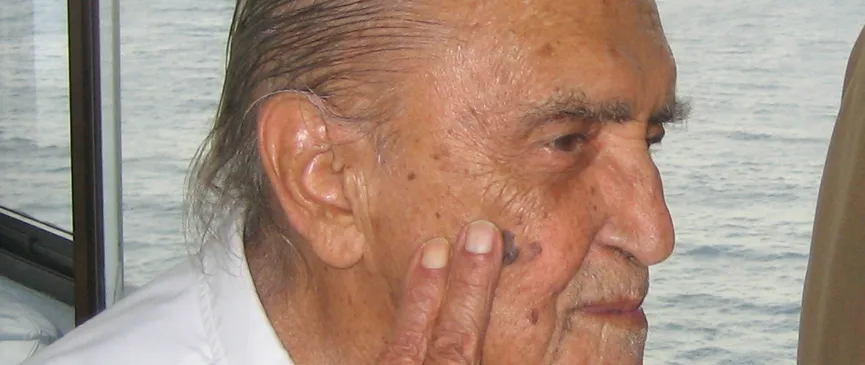Main content
Oscar Niemeyer Prince of Asturias Award for the Arts 1989

Oscar Niemeyer (Río de Janeiro, Brasil, 1907 – 2012) was one of the world’s most important architects of the twentieth century, with works on five continents. His most significant creation is the city of Brasilia, which he designed with his colleague Lúcio Costa and which was declared Cultural Heritage of Humanity by UNESCO. After studying at the National School of Fine Arts in the same city, in the 1930’s he assisted the French architect Le Corbusier, one of the fathers of modern architecture, whose ideas were to have a powerful influence on him. They worked together on the design of the headquarters of the United Nations in New York.
At the end of the 1950’s, the then president of Brazil, Juscelino Kubischek, conceived the idea of creating a new city, designed for half a million inhabitants and built according to the most avant-garde, functionalist architectural design. He gave the commission for this project for a new Brazilian capital to Niemeyer and his fellow countryman Lúcio Costa, who took four years to make it a reality. Brasilia was inaugurated in 1960 by the Brazilian president. Noteworthy among its principal architectural achievements are the Plaza of the Three Powers, where the Palace of Government, the Supreme Federal Court and the National Congress are located; the Itamaraty Palace, seat of the Chancery; the Avenue of the Ministries; and the Presidential Residence, the Alvorada Palace. The quality of the buildings and their harmony with the natural setting led UNESCO to declare Brasilia “Heritage of Humanity” in 1987. In 1962, Niemeyer settled in France, where he was to remain until 1974. During this time, he carried out many architectural projects in Europe, the Middle East and North Africa. The most outstanding of these are the headquarters of the French Communist Party in Paris; the main building for the Mondadori publishers in Milan, and the Mosque, Civic Centre and University of Algiers. Back in Brazil, Oscar Niemeyer designed a recreation centre which is popularly known as the Sambodrome, which was built between 1983 and 1984 and has been used since then as the permanent venue for the Samba schools in the Rio Carnival. Another major work is the Memorial to Latin America, inaugurated in 1989. This building, situated in Sao Paulo, consists of a 3,200-square-metre hall, a lecture hall with capacity for 4,000 people, a library with 60,000 volumes, an exhibition pavilion, a restaurant, three car parks, an administration and control building and a large civic plaza with a monumental balcony. He also designed the headquarters of the Luso-Brazilian Foundation for the Development of the Portuguese-speaking World, in Portugal, and the Popular Theatre of Niteroi (2007), in Brazil. 2010 saw the inauguration of his work in Belo Horizonte for the President Tancredo Nieves Administrative City, the seat of government of Minas Gerais. One of his latest projects is the Óscar Niemeyer International Cultural Centre in Avilés, Asturias (Spain).
Among other important awards, Oscar Niemeyer is the holder of the Lenin Peace Prize (1963), the Arquitectura de Hoy International Prize (1966), the Pritzker Prize (1988), the Grand Cross of the Spanish Military Order of Santiago (1994), the title of Commander of the French National Order of the Legion of Honour (2007) and the Order of Arts and Letters bestowed by the Government of Spain (2009).
End of main content
